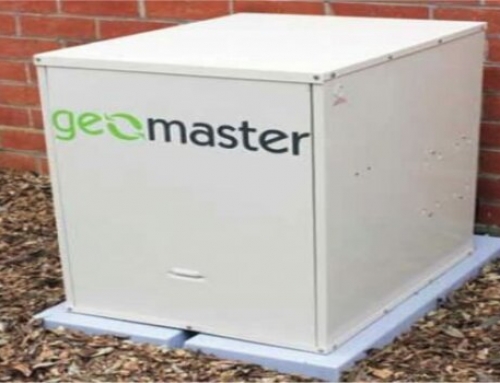DX vs Water Source Ground Loops In Geothermal Heating And Cooling Systems.
As with most things in life there are advantages and disadvantages of both DX and water source ground Loops let’s take a look at both.
DX GEOTHERMAL
Advantages
Due to the much higher specific heat of refrigerant compared to water, and the fact that copper pipe transfers heat more easily a much smaller loop field is required resulting in much less earthwork reducing the cost of total installation.
Disadvantages
Looking back over the past, fewer DX systems have been installed. This is largely due to the challenge that the ground loops are at such a low temperature and usually much lower than the compressor. There is always a prescribed amount of oil that travels around the system with the refrigerant to keep the compressor lubricated. While oil separators have been used to remove the oil before the refrigerant enters the ground loops and to try and increase the velocity of the refrigerant in the ground loops many systems have ended up with oil being trapped in the ground loops from a build-up over time causing what is known as oil logging. Oil logging eventually stops the refrigerant returning filled to the compressor causing compressor failure. The compressor is the most expensive component in the system this is a risk mini ground source heat pump manufacturers and indeed in users I’m not willing to take.
Water source ground loops
Advantages
Looking at the international geothermal scene over time it has to be observed that the majority geothermal installations use water as the heat transfer medium through polyethylene pipe ground Loops. It has the benefit of having the heat exchanger ground loop built into the heat mum which is accessible and serviceable. The benefit is the fact that polyethylene pipe will last decades and possibly centuries as compared to copper pipe which has been known to corrode when buried directly in the ground. If it does corrode the refrigerant leaks and the ground loops need to be replaced causing expensive earth works if possible which is one of the significant components of any investment in a ground source heat pump installation
Disadvantages
Because heat pumps transfer heat from refrigerant to water the water needs to be pumped which requires a very small highly efficient pump peace slightly reduces the efficiency of the heat pump. These performances are often known as the coefficient of performance (COP) for heating and energy efficiency rating (EER) for cooling although the methods for calculating these factors can vary depending on the company and country of manufacture.
This is short guide and has been compiled by and represents the views of the author. If you are looking at undertaking a geothermal project we recommend you conduct your own research and form your own views.
To learn more please watch our overview video here or on youtube here and if you’d like an estimate please use our geothermal cost calculator here.
Facebook https://www.facebook.com/geomasterau/posts/220173388596910
Linkedin https://www.linkedin.com/feed/update/urn:li:activity:6414206876795441152
Twitter https://twitter.com/Geomasterau/status/1009533709899350022
Back to Geothermal Heating






